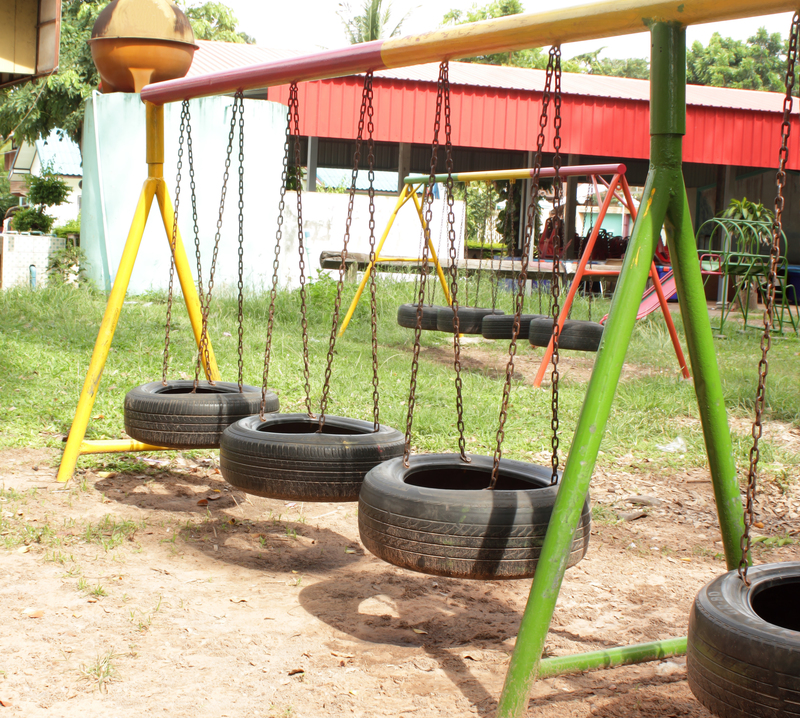
Why Responsible PPE Waste Disposal Matters More Than Ever
The COVID-19 pandemic shifted the landscape of health and safety, thrusting personal protective equipment (PPE) into everyday life for people around the world. As a result, the volume of disposable masks, gloves, gowns, and face shields skyrocketed. While these items are critical for infection control, their improper disposal has created a new environmental and public health crisis. This article explores the pressing importance of responsible PPE waste disposal -- and why it's more important now than ever before.

Table of Contents
- Introduction to PPE and Its Uses
- The Unprecedented Rise in PPE Waste
- Environmental Impact of Improper PPE Waste Disposal
- Public Health Concerns Fueled by PPE Litter
- Current Challenges in Managing PPE Waste
- Best Practices for Responsible PPE Waste Disposal
- Innovations and Solutions for PPE Recycling
- The Role of Individuals and Organizations in PPE Disposal
- Policy, Regulation, and the Path Forward
- Conclusion: A Call to Action
What Is PPE and Why Is It Used?
Personal Protective Equipment (PPE) refers to garments and gear designed to protect individuals from health and safety hazards. Common examples include face masks, gloves, eye protection, face shields, and gowns. Primarily used by healthcare workers, PPE has now become ubiquitous in public spaces, workplaces, and households as a method to reduce exposure to infectious diseases and contaminants.
- Masks: Block airborne droplets and protect respiratory systems.
- Gloves: Prevent contact with hazardous substances and surfaces.
- Gowns & Aprons: Prevent clothing and skin from contamination.
- Face Shields & Goggles: Shield eyes and face from splashes and particles.
The correct use and eventual disposal of these PPE materials are essential to minimize the risk of cross-contamination and to maintain ongoing public health safety.
The Unprecedented Rise in PPE Waste During the Pandemic
The outbreak of COVID-19 led to a surge in demand for protective equipment worldwide. According to the United Nations, global PPE waste increased by thousands of tons per day during the pandemic's peak. Hospitals, clinics, and even homes generated unprecedented quantities of single-use PPE.
Key statistics:- WHO estimates that 89 million medical masks and 76 million gloves were needed monthly by healthcare workers alone, at the height of the pandemic.
- The oceans receive an estimated 1.56 billion face masks per year, adding over 5,000 metric tons of plastic pollution annually.
- Households also significantly contributed to the problem, often discarding PPE in general waste or littering public spaces.
The result? A surge in problematic waste that existing disposal and recycling systems were not equipped to handle, putting strain on waste management infrastructure.
The Environmental Impact of Improper PPE Waste Disposal
The Plastic Pollution Problem
Most single-use PPE is manufactured from plastics such as polypropylene and polyethylene. These materials do not biodegrade quickly, persisting in the environment for decades. The improper disposal of used PPE -- tossing masks and gloves on the ground or in regular landfill bins -- directly contributes to pollution in waterways, neighborhoods, and the wider environment.
- Microplastic Contamination: Disposable masks and gloves break down into microplastics, contaminating soil and water. These particles are ingested by wildlife and enter the food chain, posing unknown risks to human health.
- Threat to Wildlife: Animals often mistake smaller PPE fragments for food. Straps and elastic components can entangle birds, marine life, and other animals, leading to injury or death.
- Overloaded Landfills: Traditional disposal of massive volumes of PPE strains landfills already under pressure, accelerating the need for new landfill sites and increasing greenhouse gas emissions.
Because PPE waste is lightweight and windborne, it can travel miles from the original source, littering landscapes and waterways and undermining environmental conservation efforts.
Carbon Footprint and Resource Usage
The mass production, packaging, shipping, and eventual incineration or landfilling of single-use PPE creates a significant carbon footprint. According to research, the carbon emissions associated with the global face mask supply chain are substantial, particularly when multiplied by billions of users.
Public Health Risks from Unmanaged PPE Waste
Improper PPE waste management introduces unique public health hazards:
- Biohazard Risk: Used masks and gloves may carry viruses, bacteria, or chemical residues. Discarded PPE in public areas exposes sanitation workers, wildlife, and the general population to potential infections and contamination.
- Blockage of Sewage Systems: Masks and gloves flushed into toilets or washed into drains contribute to sewage blockages, increasing the risk of urban flooding and sanitation crises.
- Cross-Contamination: PPE litter can become vehicles for disease transmission when handled by others or when moved by animals and weather conditions.
In some regions, the lack of clear PPE waste disposal guidelines has exacerbated the risk of outbreaks of diseases unrelated to COVID-19, making responsible PPE disposal an urgent global priority.
Current Challenges in Managing PPE Waste
Despite growing awareness, effective management of PPE waste remains challenging for several reasons:
- Inadequate Infrastructure: Not all regions have the facilities for safe collection, segregation, and treatment of PPE waste.
- Low Public Awareness: Many people remain unaware of the correct way to dispose of single-use PPE, leading to widespread littering and improper waste segregation.
- Insufficient Policy Enforcement: Lack of strict regulation and guidelines means even where systems exist, they are underutilized or inconsistently applied.
- Economic Burden: Managing increased PPE waste imposes a financial burden on local authorities, especially in developing countries.
Best Practices for Responsible PPE Waste Disposal
Adopting responsible PPE disposal methods is essential to minimize risk and environmental impact. Here are best practices for individuals, businesses, and healthcare institutions:
For Individuals and Households
- Do not litter: Never discard masks, gloves, or other PPE in public spaces or nature. Always use designated waste bins.
- Bag and secure: Place used PPE in a plastic or biodegradable bag, seal it, and dispose of it in household waste -- not recycling bins, unless specifically instructed.
- Do not flush: Never flush PPE down toilets or sinks as it clogs pipes and pollutes water systems.
- Wash hands: Sanitize your hands immediately after handling used PPE or after waste disposal.
- Follow local guidelines: Some regions may offer dedicated PPE disposal programs or collection points.
For Businesses and Public Spaces
- Provide adequate bins: Place clearly labeled PPE disposal bins in visible locations.
- Regular collection: Ensure timely and safe collection of PPE waste to prevent overflow and contamination.
- Employee training: Educate staff about safe PPE handling, segregation, and disposal practices.
For Healthcare Facilities
- Segregate medical waste: Separate PPE waste from other medical or general waste according to hazardous waste protocols.
- Use color-coded containers: Adopt color-coding systems to distinguish PPE waste from other types.
- Partner with licensed waste handlers: Work with certified hazardous waste management services for proper treatment and disposal.
Pioneering Solutions: PPE Waste Recycling and Reuse
In response to the PPE waste crisis, researchers and entrepreneurs are developing innovations to reduce environmental impact:
- PPE recycling initiatives: Specialized programs are now able to collect and process single-use masks and gloves, converting plastics into construction materials or fuels.
- Biodegradable PPE: Some manufacturers are exploring plant-based or compostable alternatives to petrochemical plastics.
- Reusable PPE: Investment in reusable, sterilizable PPE products for healthcare workers and the public can substantially reduce daily waste volume.
- Incentive programs: Communities and workplaces are launching reward systems to encourage responsible disposal and collection for recycling.
While still developing in many areas, these solutions represent a crucial shift toward sustainable PPE waste management.
How Everyone Can Support Responsible PPE Waste Disposal
Change begins at every level of society:
- Individuals should educate themselves and others about the dangers of PPE litter and adopt proper disposal routines at home, at work, and in public.
- Employers and businesses should implement clear protocols, provide resources for disposal, and support recycling initiatives.
- Healthcare professionals can act as leaders, educating patients and the community about the risks associated with improper PPE waste handling.
- Waste management services must adapt and scale up to accommodate the increased flow of PPE waste and seek circular economy solutions.
Increased awareness, education, and engagement can dramatically reduce the environmental and public health burden associated with PPE waste disposal.
Policy and Regulation: The Need for Coordinated Action
Government action is key to driving system-level change. Effective policy interventions include:
- Clear guidelines: Standardized waste segregation and disposal protocols for PPE in households, workplaces, and medical settings.
- Incentivizing recycling: Financial support for PPE recycling programs, biodegradable alternatives, and research into sustainable materials.
- Public awareness campaigns: Communication strategies to inform the public about the importance of responsible PPE disposal.
- Strong enforcement: Fines or penalties for littering and improper disposal, supported by visible monitoring in public spaces.
Collaboration between governments, NGOs, businesses, and citizens is essential to ensure the responsible management of PPE waste both now and in the future.
Conclusion: A Call to Action for PPE Waste Responsibility
Responsible personal protective equipment waste disposal matters more than ever in today's world. The pandemic has demonstrated both the life-saving power of PPE and the immense environmental and public health risks posed by improper handling of this waste.
- Improper PPE disposal threatens the environment through plastic and microplastic pollution, endangering wildlife and human health.
- It poses direct risks to public health by facilitating the spread of pathogens and overwhelming waste management systems.
- Sustainable solutions -- from recycling and biodegradables to policy change and education -- are gaining traction, but require universal participation to be effective.
Every individual and organization has a role in making PPE waste disposal safer, cleaner, and more responsible. By adopting best practices and supporting innovation, society can reduce the negative impacts of PPE waste and ensure that protective equipment continues to be an asset, not a liability, as we navigate ongoing and future health challenges.
Let's act together -- because how we handle today's PPE waste will shape tomorrow's world.
